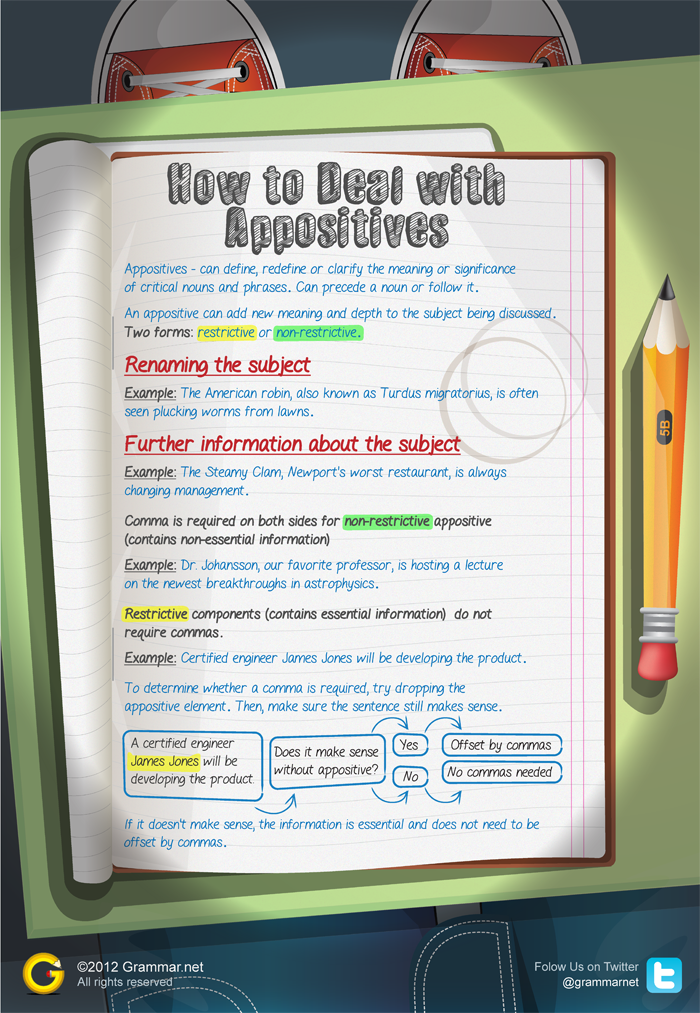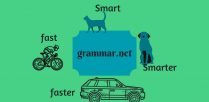Appositives are useful grammatical tools, but they can also be challenging due to their diversity and intricacies. The appositives definition can help new and experienced writers understand how appositive elements function within different sentences. An appositive renames a noun or noun phrase. It can define, redefine or clarify the meaning or significance of critical nouns and phrases. This information can precede a noun, or it can follow one.
To download high-resolution poster click here
In any sentence, an appositive can add new meaning and depth to the subject being discussed. Appositive components come in two forms. They can be either restrictive or non-restrictive. The rules for commas and appositives vary depending on the way the phrases are used. Like other grammatical tools, appositive elements follow certain patterns. Once these patterns are familiar, it’s much easier to decide whether commas are required. Here are a few examples of appositives that illustrate important concepts and rules.
The American robin, also known as Turdus migratorius, is often seen plucking worms from lawns.
This example clearly renames the subject. Here’s another example.
The Steamy Clam, Newport’s worst restaurant, is always changing management.
In this example, the appositive element provides further information about the Steamy Clam. This format can be used to provide further information that is good or bad. Here are two more examples.
Dr. Johansson, our favorite professor, is hosting a lecture on the newest breakthroughs in astrophysics.
New York City, the shopping capital of the world, is home to many world-class attractions and historic landmarks.
In these examples, a comma is required on both sides of the appositive to set it off from the rest of the sentence. Any appositive that contains non-essential information is known as a non-restrictive appositive. However, there are also restrictive components that do not require commas. The following examples compare these two forms.
A certified engineer, James Jones, will be developing the product.
In this example, the name James Jones provides additional information about the certified engineer. Because the sentence makes sense without the name, a comma is required.
Certified engineer James Jones will be developing the product.
In the second example, the name James Jones is essential to the meaning of the sentence. If it is dropped, the sentence doesn’t work.
Appositive elements can also be moved around within the sentence. They can precede or follow a noun or a noun phrase. Here’s an example.
James Jones, a certified engineer, will be developing the product.
To determine whether a comma is required, try dropping the appositive element. Then, make sure the sentence still makes sense. If it makes sense without the additional information, the non-essential element must be offset by commas. If it doesn’t make sense, the information is essential and does not need to be offset by commas.
Have you ever had any trouble using appositives? If you find that appositive elements cause sticky writing situations, share your thoughts and suggestions.



![Gerund: hints and tips [infographic]](https://www.grammar.net/wp-content/uploads/2012/07/gerund_small-308x95.png)
![10 Idioms About Food [infographic]](https://www.grammar.net/wp-content/uploads/2012/10/10-food-idioms_small-308x95.png)



